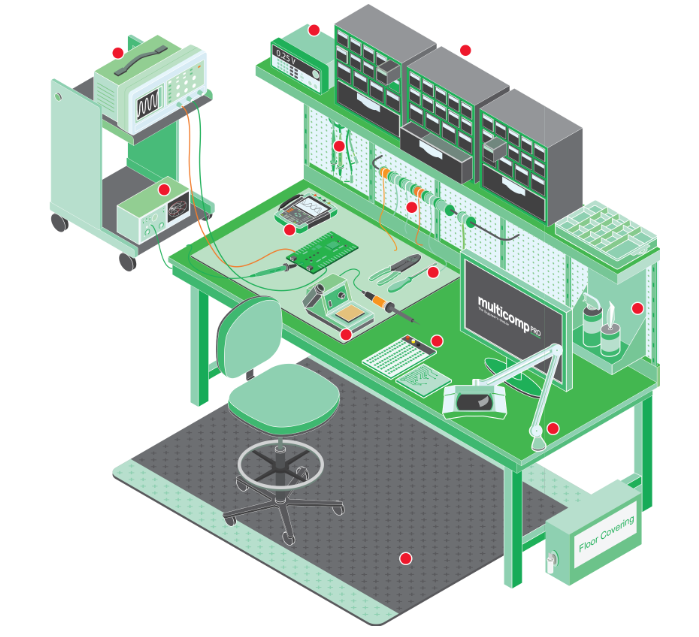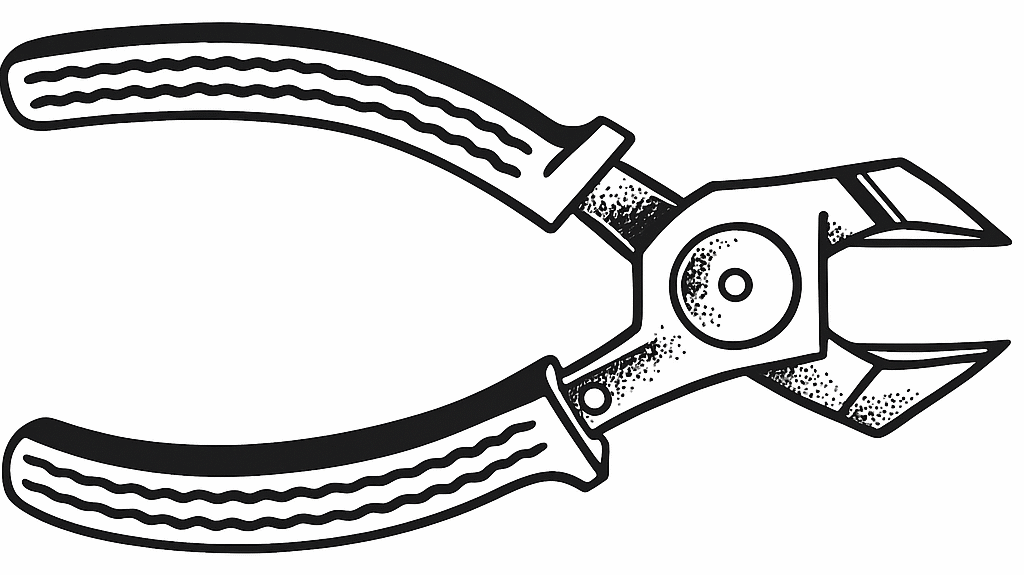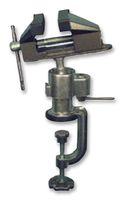We chose a model suggested by Newark which is in the link below, serving as a base to equip it with its instruments, tools and other accessories, thus facilitating its acquisition according to each person's needs.
For each item with the given location there are many options and, as we will mention in each case, the choice depends on the specific work that its owner intends to carry out and, of course, on his/her availability of resources to acquire the item. We will focus on basic items whenever possible.
Basic appearance
In the figure we have the basic bench that provides a medium-sized model that contains the main resources for professional work. The resources range from the workplace itself, the chair, lighting, anti-static mat, component storage, assembly resources and tools. , instruments and much more that we now store individually. Also note the optional provision of a cart for placing bulkier instruments that might not need to be on the main bench.
On the Newark website at the link below, you can click on each section of the bench given by the red dots, accessing the related products available. We will talk about these products in the next pages.
https://www.newark.com/mpro-lab-supplies
1. Organization
Electronics professionals work with a large number of very small components that can easily get lost, mixed up and even damaged by touching energized points on a circuit or the welder. For this reason, it is very important to have a simple way to store the components in an organized way, starting with the smallest ones.
On the bench that we used as a model, we show simple drawers that can be used with common or SMD components such as resistors, capacitors, inductors, transistors and integrated circuits. The main advantage of this type of drawer is that it allows the use of labels to easily identify the type of component being stored.
However, there are a multitude of formats that can also be adapted to store hardware components such as screws, nuts, terminals, plugs, etc.
In addition to common drawers, we also have trays with dividers that can be stored in drawers or cabinets and boxes that can be used to accommodate larger components, such as prototypes, assembled printed circuit boards and even bulky components such as transformers, solenoids, etc.
There are many types of plastic boxes with or without lids, with different sizes that can be found in supermarkets and hardware stores, which are ideal for storing components and even larger parts.
The bench may not be sufficient to accommodate your components and even devices (prototypes, equipment being repaired or tested, additional instruments, etc.). In this case, you can think of open or closed cabinets to accommodate more things.
Of course, these additional features depend on the space you have, your resources, and your needs.
Improvisation
Not everyone has the resources to buy drawers. There are many common products packaging that can be used to house components, either permanently or during a job.
For example, I know professionals and amateurs who use egg cartons to accommodate screws, nuts and small components during work in a simple, organized and safe way.
Boxes of chocolates, sweets and others with good appearance and many divisions can be used to store your electronic components. Of course, on a bench that needs to look good, in a school or workshop, professional solutions are the best.
2. Tools
Working with appropriate tools for each type of operation is essential for achieving professional performance and also serves to command respect in those who observe your work.
There is nothing more unpleasant or even compromising and dangerous than using the wrong tool for an operation. We see a lot of this with “professionals” using screwdrivers as chisels, pliers handles for tapping, and similar things.
Always have the appropriate tools for your work and, of course, a place to place them on your workbench. Examples can be seen in item 3 of our bench used as an example.
There are tools for practically any type of mechanical operation you want to do in electronics work. Having them all is impossible, although it is the desire of all of us.
Therefore, the choice of tools and their quantity depends on your needs. You can have the basics with just a few of them on your experimental bench in your apartment, as you can have a larger quantity in your development workshop and much more on a bench at a technical school or a larger company or one dedicated to sophisticated repair work.
Below we give a list of them that can serve as a basis for you who want the fundamentals to start your electronics work. Over time you will acquire more, depending on your possibilities.
The tools can be separated into groups, depending on their purpose, which makes it easier to choose according to what you need. Thus, we have tools for extracting or placing screws, adjustment tools, files. Pliers, etc. But, let's get to them.
Screwdrivers
Screwdrivers are also essential tools on the repair bench. The technician must have a set with at least 4 wrenches of different sizes, depending on the screws that must be placed or removed (fig.2).
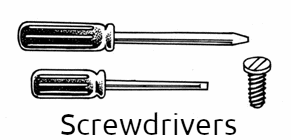
Philips screwdriver
The technician must have at least two good quality Philips screwdrivers to remove this type of screw, which frequently appears on different types of mounting plates and devices, as shown in figure 3.
Using another type of wrench to try to remove this type of screw can cause deformation of the fitting (dust) and thus, major problems for the maker.
Mini Screwdrivers
Electronic equipment is getting smaller and the parts that can be assembled or disassembled are getting smaller. These parts use screws of the three types indicated, but of very small dimensions.
Therefore, a set of these miniature “watchmaking” screwdrivers, as we also call them, is extremely useful. The figure shows an example of a set of these tools.
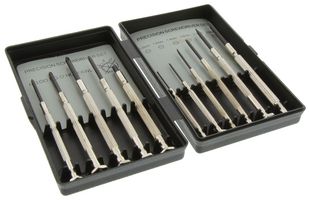
Link - https://www.newark.com/duratool/22-14065/kit-contents-screwdriver-set-precision/dp/73T5934
Cutting pliers
Side cutting pliers are another essential tool on the maker's bench. In figure 5 we have a low-cost and very useful type that is used to cut terminals of components, wires, parts, etc.
Over time, the maker may consider having more than one type of cutting pliers in his workshop.
Nose pliers
Straight nose or “duck bill” pliers are very useful for removing components and also for holding small parts in a welding or fitting position, thus avoiding burning your fingers and spreading heat (fig. 6).

A variant of this type of pliers, which over time may become part of the bench, is the curved nose pliers.
Lire stripping blade or stilet
The wire stripping, cutting or utility knife blade can be obtained in several ways. There are small knives, stylets or pocket knives that can perform this function well and that must be present on the repairman's bench (fig. 7).

Lime
This tool is very useful, but not essential. A small straight file will be useful for cleaning the tips of soldering irons and also for removing oxide layers (rust) from component terminals.
Vise or mini table vise
A small vise, or bench vise, as shown in figure 8, will be useful for carrying out small mechanical work.
Cutting plates, drilling, cutting potentiometer shafts are made easier when the parts are fixed in this vise. There are even small vises with suction cups that are clamped onto a table, holding small boards and components so that we can work on them.
Printed circuit board support
Repairing defects on boards that require replacement of parts is much easier with this tool (fig. 9)
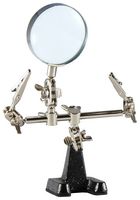
The printed circuit boards will be fixed and secured, thus making it possible to exchange any component easily.
Pcb strapler drill
The manual PCB drill will be important for the maker who carries out assemblies, adapting circuits or even building devices to sell. The manual type is low cost and very useful on the maker's and equipment repairman's bench (fig. 10).

This stapler type is the most common but has the limitation of the single hole size. For greater flexibility, you can use one of the type indicated in figure 11.

Electric drill
A large electric drill is already a luxury for a beginner repair technician, however its usefulness cannot be denied. When drilling boxes or adapting devices, it will help you make any type of hole with ease. Accessories such as reamers, polishers, etc. are also useful.
Tweezers
Small tweezers will be useful in removing components and pieces of components from inside the devices. Its usefulness is great, but there are alternatives. Figure 12 shows a set of very useful parts for Electronics work.
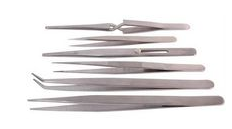
Other tools
There are many other very useful tools on the bench, but they are not mandatory and, therefore, over time, the reader will be able to acquire them. In figure 13 we show some of them.

We then have the common scissors, the special wrench for stripping wires, the punch, the magnifying glass to see the small markings on components, the steel brush for cleaning parts, the soft brush for cleaning the internals of devices, etc.

